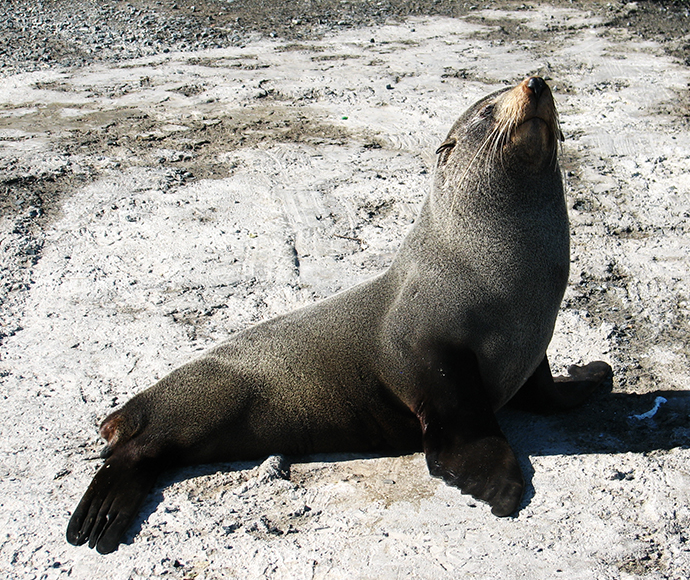See a seal? Let us know!
The Seabirds to Seascapes (S2S) team is calling on all citizen scientists to record seal spotting's along the coast of NSW with the help of the online Haul-Out, Call-Out platform to further inform future marine conservation efforts.
A ‘haul-out’ is the term given when seals temporarily leave water to rest or reproduce. Haul-Out, Call-Out allows the community to record the location and time of where they have seen a hauled-out seal, as well as several other factors.
The platform can be accessed via the Haul-Out, Call-Out landing page.
Seal sightings recorded via Haul-Out, Call-Out will be used to complement information collected through ongoing drone surveys along the NSW coastline.
The inaugural drone survey took place at Barrenjoey Headland and will be followed by drone surveys at other known haul-out locations in NSW such as Barunguba Montague Island, Seal Rocks Nature Reserve and Steamers Head.
These activities are part of the S2S program's broader Seal Survey initiative, which includes tagging and monitoring rehabilitated seals after their release to study their preferred habitats.
Earlier this year, Diaz, a New Zealand fur seal, was the fifth rehabilitated seal to be released under the S2S program. After her release from Sydney Heads, she travelled more than 6,000 km down towards Tasmania.
The Seal Survey will inform various marine conservation initiatives in NSW and reduce gaps in knowledge that will assist in mitigating the risks associated with human and seal interactions.
People must keep at least 40 m from an adult seal and 80 m from a pup, as well as keeping their pets under control. The penalty for approaching seals within prescribed distances is up to $1,320.
The Haul-Out, Call-Out launch coincides with Biodiversity Month, a time to celebrate the value of connecting with and caring for nature in all its diversity.
More information on approaching seals can be found via the NSW Government website.
If you spot a sick or injured seal, you can contact NSW National Parks and Wildlife Service on 1300 072 757, or the Organisation for the Rescue and Research of Cetaceans in Australia on 02 9415 3333 for the animal to be checked and monitored.
The S2S program, launched in August 2022 and is a four-year initiative focused on protecting and managing NSW's marine ecosystems. It unites 3 key efforts:
- Project Restore
- The Great Big Little Penguin Count
- The Seal Survey.
The New South Wales Environmental Trust funds S2S to help lead and deliver each initiative, with support from its project partners, including:
- Department of Climate Change, Energy, the Environment and Water
- Sydney Institute of Marine Science
- Taronga Conservation Society Australia
- New South Wales National Parks and Wildlife Service
Quotes attributable to Kate Akkerman, Senior Policy Officer, Seabirds to Seascapes:
'Since its inception in 2022, the S2S program has worked tirelessly to restore important habitat in Sydney Harbour as well as supporting the penguin and seal populations throughout the state.
'Resting in haul-outs is incredibly important for seals which spend most of their time foraging at sea. We call on the public to please respect these animals and give them space, as it is the safest thing for both them and us.'
Quotes attributable to Dr Ben Pitcher, Behavioural Biologist, Taronga Conservation Society Australia:
'This research is so important because the marine environment is changing rapidly and is facing threats from climate change and human influences such as pollution.
We really need to know where the seals are and what they’re doing so we can understand the threats they face and work to mitigate these threats in the future.'

New Zealand fur seal